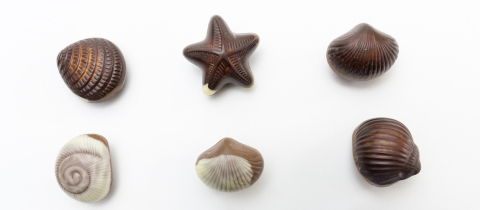Life is full of difficult decisions, isn’t it? Should you put broccoli on a pizza before or after sliding it into the oven? Fret not. This decision can be made a little easier by examining the properties of sulphoraphane, touted by a plethora of books, magazines, websites and nutritional gurus as being responsible for broccoli’s anti-cancer effect. But I’ll let you in on a secret. While sulphoraphane may have anti-cancer properties, it is not found in broccoli!
That doesn’t mean that we are being conned about the benefits of broccoli. Far from it. There may be no sulphoraphane in broccoli, but the vegetable is still an excellent source of this compound. Sounds confusing? Let’s clear it up. You do have to get ready for some complicated terms though. But stick with it. It’s worthwhile.
While sulphoraphane may not be present in broccoli, its precursor, glucoraphanin is. And it is ready to liberate its anti-carcinogenic component when prompted by an enzyme known as myrosinase, also present in broccoli. In intact plant cells, myrosinase is physically separated from glucoraphanin and only when broccoli is chewed or chopped do the two chemicals come into contact and release sulphoraphane, which can then be absorbed into the bloodstream from the small intestine. Unfortunately, myrosinase is inactivated by heat, so excessive cooking reduces the amount of sulphoraphane that can be released.
Several questions arise when considering the biological effects of broccoli. The term “anti-cancer” is commonly bandied about when talking about this and other cruciferous vegetables. How do we know it has such an effect? Actually, we really don’t know. But as is so often the case in science, we can make an educated guess. Epidemiological studies show that populations that consume more cruciferous vegetables, such as broccoli, cauliflower, cabbage, kale and Brussels sprouts have lower rates of cancer. And it is these vegetables that release isothiocyanates, a family of compounds to which sulphoraphane belongs. However, these populations also tend to consume more of many other vegetables and fruits. Furthermore, surveys based on self-reporting of food consumption are notoriously unreliable.
A few studies have examined the relationship of cancer and isothiocyanates in the urine. The idea is that amounts present in the urine reflect the consumption of cruciferous vegetables. In one such study, Chinese men who had detectable levels of isothiocyanates were at significantly lower risk of developing lung cancer over the following ten years than men with undetectable levels. Another way of looking into diet-disease relationships is the case-control study in which patients with a disease are compared with healthy controls. One such study found that urinary isothiocyanate excretion was significantly lower in Chinese women diagnosed with breast cancer than in a control group. Curiously, in the same study, cruciferous vegetable intake estimated from food frequency questionnaires was not associated with breast cancer.
There is also some theoretical support for the benefits of sulphoraphane from laboratory cell culture studies. When human cells are confronted with a toxin they try to eliminate it through the action of various detoxicating enzymes. Sulphoraphane induces the formation of these enzymes since cells regard it as a foreign substance and mark it as a target for elimination. While sulphoraphane may be harmless, some of the other compounds that are eliminated by the higher level of detoxicating enzymes may be carcinogens. Putting all this together suggests that eating broccoli regularly is a smart thing to do. The evidence is circumstantial, but there is no downside except for people who are on anticoagulant medication. In that case eating large amounts of broccoli can be a problem because the vitamin K in the vegetable can counter the effects of the anticoagulant.
Why do cruciferous plants produce chemicals such as sulphoraphane? It isn’t because they are interested in protecting humans against cancer. They are interested in protecting themselves from insects, bacteria, viruses and fungi. Attack by any of these causes cell walls to be ruptured, bringing myrosinase into contact with glucoraphanin to produce sulphoraphane which has insecticidal and anti-microbial properties. We are the lucky beneficiaries of such clever plant activity.
Dietary supplement manufacturers are quick to jump on any study that can be used to promote the sale of products. Broccoli powder is available in health food stores but whether or not it can provide sulphoraphane is questionable since processing destroys myrosinase. Incidentally, the same is true for frozen broccoli. The blanching carried out prior to freezing eliminates most of the enzyme.
So what does all of this have to do with my pizza problem? Baking the pizza with a broccoli topping is sure to destroy all the myrosinase. On the other hand, a pizza with raw broccoli is no gustatory delight. But University of Illinois researchers led by Elizabeth Jeffery have come to the rescue with their discovery of what I’ll call the “spice effect.” Certain spices, such as mustard, horseradish and wasabi are rich in myrosinase and sprinkling these onto cooked broccoli will release sulphoraphane. Now it seems we can eat our broccoli cooked and have our sulphoraphane too. All we have to do is spice up our life a little!
There’s a message here about cooking broccoli as well, pizza considerations aside. Don’t cook it to death! If you want to get the sulphoraphane benefits steam it or microwave it for a couple of minutes. Remember, though, that single foods should never be looked upon either as saviours or criminals. It is the overall diet that matters. Still, eating three to five servings of broccoli a week may provide enough sulphoraphane to have an anti-cancer effect. But that’s a guess. Hopefully an educated one.







